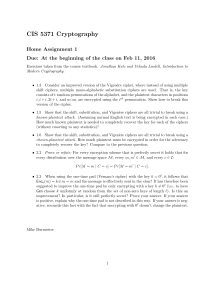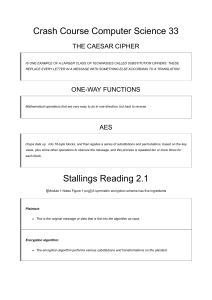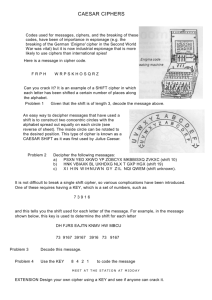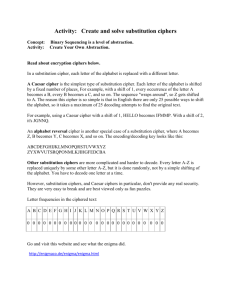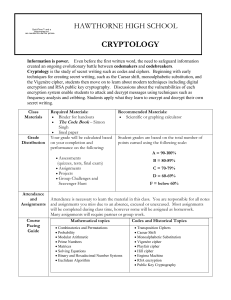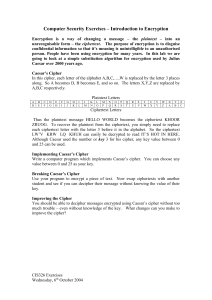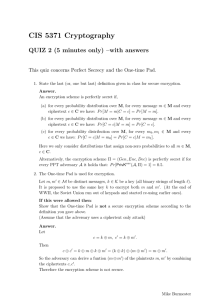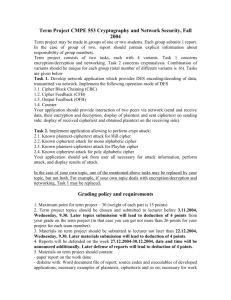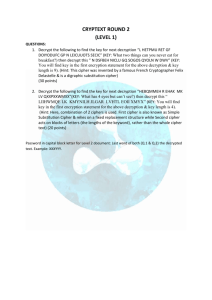CS361 Questions: Week 8
advertisement
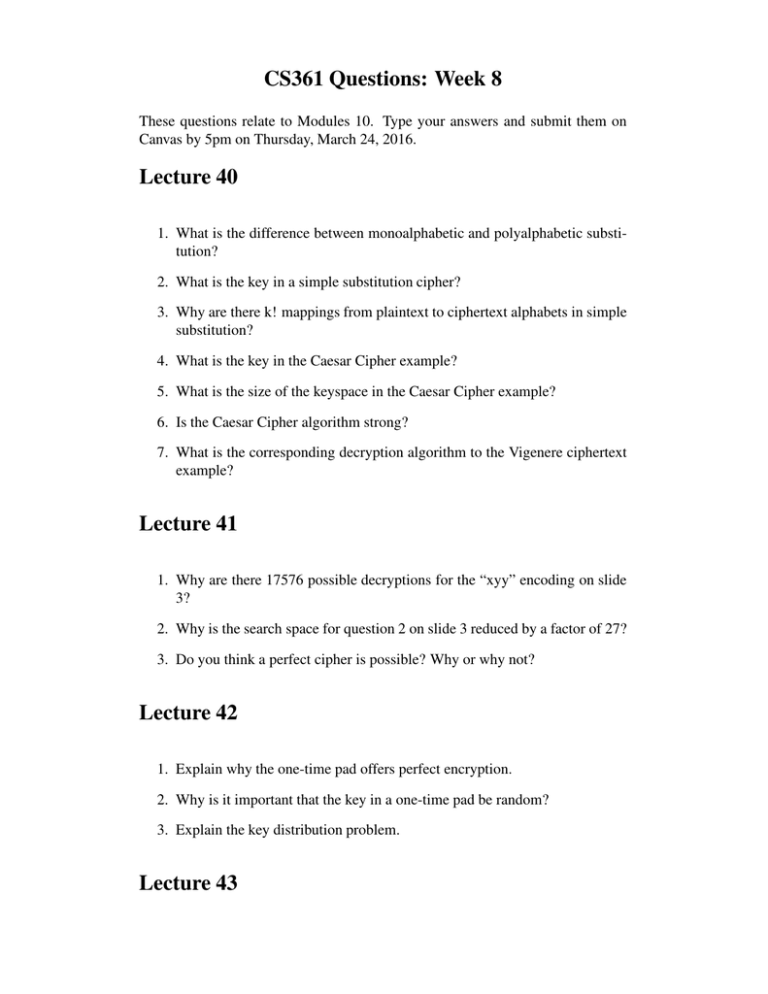
CS361 Questions: Week 8 These questions relate to Modules 10. Type your answers and submit them on Canvas by 5pm on Thursday, March 24, 2016. Lecture 40 1. What is the difference between monoalphabetic and polyalphabetic substitution? 2. What is the key in a simple substitution cipher? 3. Why are there k! mappings from plaintext to ciphertext alphabets in simple substitution? 4. What is the key in the Caesar Cipher example? 5. What is the size of the keyspace in the Caesar Cipher example? 6. Is the Caesar Cipher algorithm strong? 7. What is the corresponding decryption algorithm to the Vigenere ciphertext example? Lecture 41 1. Why are there 17576 possible decryptions for the “xyy” encoding on slide 3? 2. Why is the search space for question 2 on slide 3 reduced by a factor of 27? 3. Do you think a perfect cipher is possible? Why or why not? Lecture 42 1. Explain why the one-time pad offers perfect encryption. 2. Why is it important that the key in a one-time pad be random? 3. Explain the key distribution problem. Lecture 43 CS361 Questions: Week 8 2 1. What is a downside to using encryption by transposition? 2. How could a combination of ciphers be weaker than the individual ciphers alone? Lecture 44 1. Is a one-time pad a symmetric or asymmetric algorithm? 2. Describe the difference between key distribution and key management. 3. If someone gets a hold of Ks, can he or she decrypt S’s encrypted messages? Why or why not? 4. Are symmetric encryption systems or public key systems better? Lecture 45 1. Why do you suppose most modern symmetric encryption algorithms are block ciphers? 2. What is the significance of malleability?


